Hi everyone,
I'm choosing fuse boxes whilst waiting for my Roamer SB230 battery to trickle in.
So, I understand the difference between the -ve busbar and -ve to body ground types of fuse boxes; clearly the one with -ve busbar is good for those places where the body is fibreglass or wood - ie boats, sheds etc.
So the dilemma - do I get a fusebox with a -ve busbar or one without, is there an obvious benefit I'm missing when comparing the 3 pictured below (ignore the lack of +ve busbar in the 3rd picture)? Maybe something about battery management, logging or isolating?
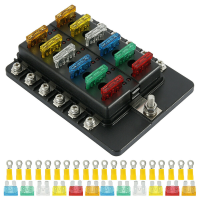
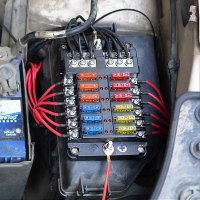
or this:
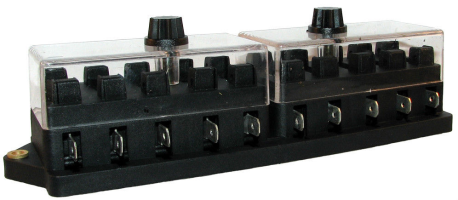
I'm going to be putting a couple of monster solenoids in to allow me to use an Anderson plug for jump starts and for the inverter (Inverter will be wired with its own chunky fuse:
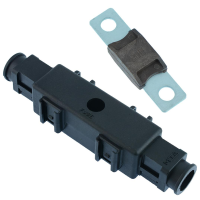
or is it better to bite the bullet and get one of these:
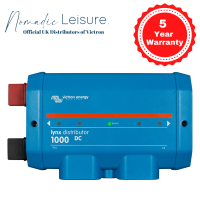
Jump leads will be wired to starter battery via solenoid/relay, no fuse.
Thx.
David
I'm choosing fuse boxes whilst waiting for my Roamer SB230 battery to trickle in.
So, I understand the difference between the -ve busbar and -ve to body ground types of fuse boxes; clearly the one with -ve busbar is good for those places where the body is fibreglass or wood - ie boats, sheds etc.
So the dilemma - do I get a fusebox with a -ve busbar or one without, is there an obvious benefit I'm missing when comparing the 3 pictured below (ignore the lack of +ve busbar in the 3rd picture)? Maybe something about battery management, logging or isolating?


or this:

I'm going to be putting a couple of monster solenoids in to allow me to use an Anderson plug for jump starts and for the inverter (Inverter will be wired with its own chunky fuse:

or is it better to bite the bullet and get one of these:

Jump leads will be wired to starter battery via solenoid/relay, no fuse.
Thx.
David
